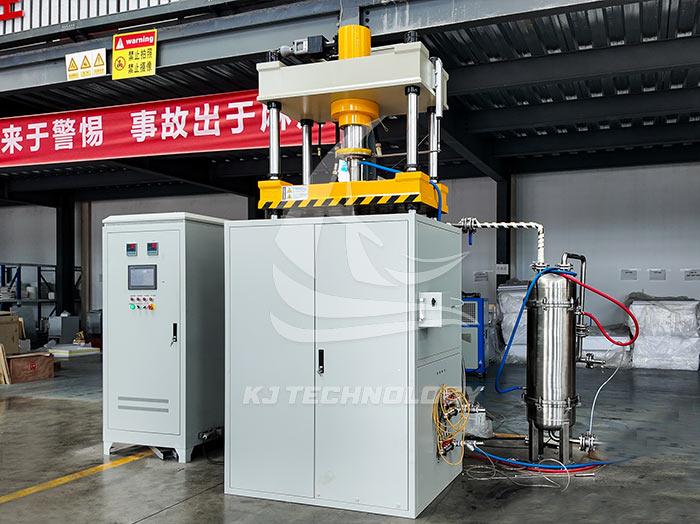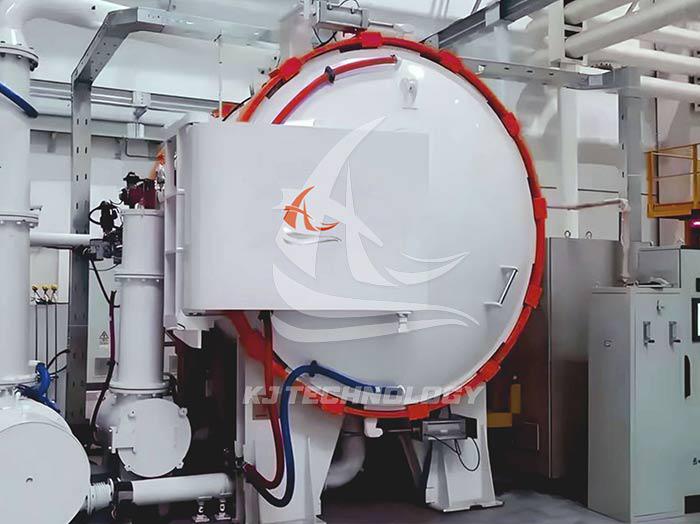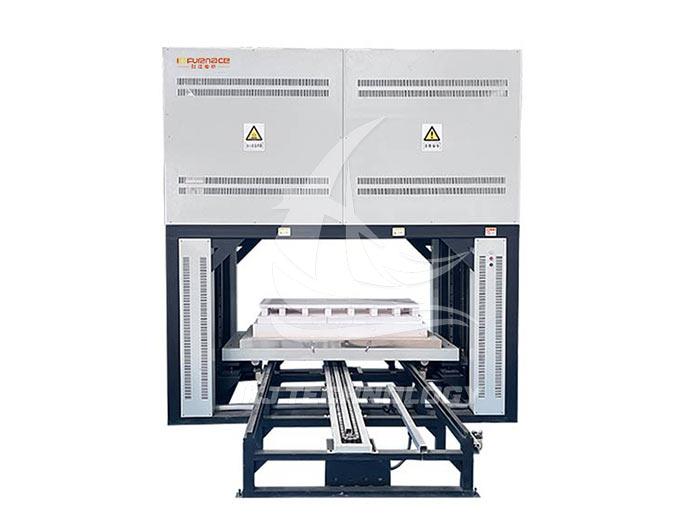Can a vertical high vacuum hot pressing electric furnace process ceramics?
 08-20-2025 Author: KJ technology
08-20-2025 Author: KJ technology
The vertical high vacuum hot pressing electric furnace is fully capable of processing ceramic materials and has significant advantages in ceramic preparation. Through the synergistic effect of vacuum environment, high-temperature heating, and mechanical pressure, it can solve key problems in traditional ceramic sintering and significantly improve material properties. The following is a specific analysis:
1. The core advantages of using a vertical high vacuum hot pressing electric furnace to process ceramics
Eliminate gas inclusions and increase density
Vacuum environment (10 ⁻⁵ Pa level): Thoroughly isolate active gases such as oxygen and nitrogen to prevent ceramics from oxidizing or decomposing at high temperatures (such as silicon nitride easily oxidizing to form silicon dioxide in air).
Pressure assisted sintering: By applying unidirectional or bidirectional pressure (usually 5-100MPa) through a hydraulic system, particle rearrangement and pore elimination are promoted, resulting in a ceramic density of over 99.5%, much higher than atmospheric sintering (usually 90% -95%).
Case: A certain enterprise used this equipment to prepare silicon nitride ceramic bearings, which increased the density from 92% in traditional processes to 99.8%, increased the bending strength from 600MPa to 1000MPa, and extended the service life by three times.
Reduce sintering temperature and shorten process cycle
High temperature and pressure synergy: High temperature puts ceramics in a thermoplastic state, while pressure promotes particle contact and diffusion, significantly reducing sintering temperature (200-300 ℃ lower than atmospheric pressure sintering). For example, atmospheric pressure sintering of silicon carbide ceramics requires 2100-2300 ℃, while hot pressing sintering only requires 1800-2000 ℃.
Rapid densification: Pressure accelerates the densification process, shortens insulation time (from several hours to 30-60 minutes), and reduces single batch production time by 30% -50%.
Optimize grain structure and enhance mechanical properties
Inhibiting abnormal grain growth: Pressure restricts the free growth of grains to avoid increased brittleness caused by coarse grains. For example, the grain size of alumina ceramics sintered by hot pressing can be controlled within 1-3 μ m, while it can easily reach 5-10 μ m by atmospheric pressure sintering.
Improving fracture toughness: Fine grained structure enhances ceramic fracture toughness (KIC) by 20% -50% through crack deflection and bridging mechanisms. For example, the KIC of hot pressed silicon nitride ceramics increased from 6MPa · m ¹/² to 8-10MPa · m ¹/².
2. Ceramic types processed by vertical high vacuum hot pressing electric furnace
Structural ceramics
Silicon nitride (Si ∝ N ₄): used in bearings, cutting tools, turbine rotors, etc., with a bending strength of 800-1200MPa after hot pressing and a 50% increase in wear resistance.
Silicon carbide (SiC): used for high-temperature structural components, bulletproof armor, etc., with a hardness of 25-30GPa after hot pressing and better corrosion resistance than metals.
Aluminum oxide (Al ₂ O3): used for electronic substrates, wear-resistant coatings, etc. After hot pressing, the density reaches 99.8%, and the thermal conductivity is increased to 30W/(m · K).
Functional ceramics
Transparent ceramics: such as alumina and magnesium aluminum spinel (MgAl ₂ O ₄), with a transmittance of>85% after hot pressing, used for laser windows, infrared detectors, etc.
Piezoelectric ceramics: such as lead zirconate titanate (PZT), with a 15% increase in piezoelectric coefficient (d ∝) after hot pressing, suitable for ultrasonic transducers, sensors, etc.
Magnetic ceramics, such as yttrium iron garnet (YIG), reduce magnetic loss by 30% after hot pressing and are used in microwave devices.
Ceramic based composite materials
Carbon fiber reinforced silicon carbide (C/SiC): The hot pressing process increases the bonding strength between carbon fiber and silicon carbide by 50%, and its impact resistance is better than that of single-phase silicon carbide.
Boron nitride reinforced aluminum oxide (BN/Al ₂ O3): The thermal conductivity of the material after hot pressing reaches 50W/(m · K), while maintaining high insulation, used for heat dissipation in electronic packaging.
3. Process flow of vertical high vacuum hot pressing electric furnace for processing ceramics
Raw material preparation: Mix ceramic powder (such as silicon nitride, silicon carbide) with sintering aids (such as yttrium oxide, aluminum oxide) in proportion, ball mill evenly, and then dry.
Loading and vacuuming: Load the powder into a graphite mold, place it in the furnace, and vacuum it to 10 ⁻³ -10 ⁻⁵ Pa to remove air and moisture.
Heating and pressurization:
Heating stage: Heat up at a rate of 5-10 ℃/min to the sintering temperature (such as 1750-1850 ℃ for silicon nitride).
Pressure stage: After the temperature reaches the target value, apply pressure (usually 20-50MPa) and maintain it for 30-120 minutes.
Cooling and demolding: After cooling to room temperature in the furnace, take out the sample for subsequent processing (such as cutting and polishing).
4. A typical case of ceramic processing using a vertical high vacuum hot pressing electric furnace
Silicon nitride ceramic bearings
Problem: Traditional atmospheric sintering is prone to producing pores and coarse grains, resulting in low strength and short lifespan.
Solution: Adopting a vertical high vacuum hot pressing electric furnace, sintering at 1800 ℃ and 30MPa for 2 hours, the density reaches 99.8%, the bending strength is 1000MPa, and the service life is extended by 3 times.
Effect: After being used by a certain bearing manufacturer, the product qualification rate increased from 85% to 98%, and the annual cost savings exceeded 2 million yuan.
Silicon carbide ceramic nozzle
Problem: The nozzle prepared by traditional processes has insufficient wear resistance and is easily worn by sand particles.
Solution: Hot pressing sintering refines the silicon carbide grains to below 2 μ m, achieves a hardness of 28GPa, and improves wear resistance by 50%.
Effect: After being used by a certain oilfield enterprise, the nozzle life was extended from 3 months to 18 months, reducing downtime maintenance costs.
Aluminum oxide transparent ceramic window
Problem: The light transmittance of atmospheric sintering is low (<70%), which cannot meet the requirements of laser applications.
Solution: Hot pressing sintering eliminates grain boundary pores, increases light transmittance to over 85%, while maintaining high strength (flexural strength>500MPa).
Effect: After being used by a certain laser manufacturer, the product performance reached the international advanced level, and the export volume increased by 30%.








